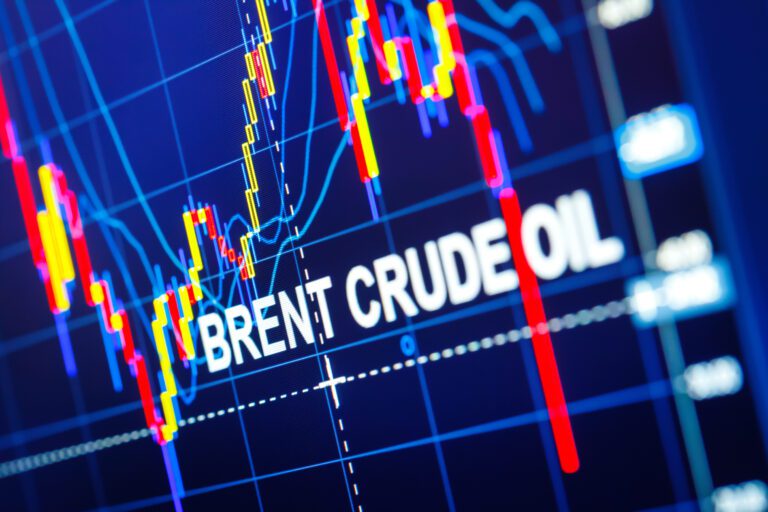
Let’s start with crude and the Brent price, which started the year at $76 per barrel and finished the half-year (Jun 30th) at $86. A 13% rise is clearly a decent increase, although, in the context of the last few years, it would not be categorised as anything spectacular. Overall, the broad direction of travel has been steadily upwards, with the Q1 average (Jan – Mar) at $82 and Q2 (Apr – Jun) being $85 per barrel. At the beginning of April however, there was a steep drop in prices, as Brent quickly retreated from the highs of the year so far (5th Apr = $91), to only $78 exactly 2 months later (5th June).
Readers of this report will remember that our start of year prediction was for prices to largely trend sideways in 2024, and stick in the $70 – $80 per barrel bracket. Evidently, price movements from Jan – Jun have not been exactly in line with this forecast, but at the same time, the sharp correction downwards in April / May would suggest that a “price ceiling” had been hit. This is because oil markets were broadly balanced, and with supply and demand in check, prices eased off.
Global supply
Global supply remains extremely buoyant and there is no let-up in the flood of product coming on-stream, with 1.4m barrels per day (bpd) being added to the market in the first half of this year. The supposedly “anti-oil” President Joe Biden, has overseen an increase in US production of 800K bpd this year and that was on top of a 1m bpd increase in 2023. This situation continues to put OPEC producers on the back foot and a further production cut of 2m bpd has been mooted by Saudi Arabia in an attempt to keep prices high. Predictably this suggestion has not gone down well with the smaller nations of OPEC, who see the likes of the USA and Guyana simply stealing their market share. Bearing in mind that the Saudi’s proposal would only be a voluntary measure, it seems unlikely that it will see the light of day.
In addition to the current healthy global supply position, some of the bullish (i.e., upward) geopolitical price factors that we discussed in January have not come to pass. The Russian-Ukraine war seems to be set in stalemate, whilst the Palestinian conflict has not extended beyond Israeli-Palestinian borders. At the same time, the attacks on shipping in the Red Sea have decreased and many shippers are now re-routing their tankers around the Cape of Good Hope anyway, so that any extra freight charges have long been factored into the overall cost of crude.
Refining
If we now look at refining, we can see that the production “crack” at the beginning of the year was around $35 per barrel, but this has now fallen below $20. The crack (or “refining spread”) is how much gross profit a refinery makes, and is based on the sale price of its refined products (e.g., petrol, diesel, jet fuel) minus the buying price of its crude feedstock. The first point to note is that a $35 refining crack is a handsome margin indeed and, by historical standards, the reduced crack of circa $20 isn’t bad either. Nonetheless, the relevance of the reduced crack spread is the impact it has had in lowering consumer prices, because do remember that end-users buy refined products, rather than crude oil itself. So, in January, refineries were buying their crude at $76 per barrel and then enjoying a gross margin of $35, which meant that the price of petrol, diesel etc. was circa $111 per barrel. However, fast forward to the end of June and the refinery gross margin is now only $18 per barrel, which means that even though the price of crude had risen to $86, that still only gave a price for petrol and diesel of $104 per barrel.
The reason behind the drop in refinery margins has been well explored in previous Portland reports and, basically, is the result of increased refining capacity around the world. For the last 5 years, Indian refineries have massively increased their production capabilities, whilst more recently, the huge Dangote refinery in Nigeria is already having a serious impact on European fuel markets. A total of 18 new refineries / refinery expansions are scheduled globally for 2024, and in this light, it seems highly likely that refinery margins will continue to fall, and the crack may well end the year at around $10 per barrel.
This ongoing drop in end-user prices is exactly what policy makers around the world have been hoping for, because of its role in taming inflation. That, in turn, has been one of the factors behind the softening of interest rates to the point where we now have the million-dollar questions of when reduced rates will free-up spending, lift the economy and stimulate demand? This certainly hasn’t happened yet and nor have the lower prices for refined products generated an uptick in demand. In fact, world oil demand is currently decelerating, with the Chinese economy flatlining, and consumption stagnant. At the same time, it seems unrealistic to think that reduced interest rates will start to enable growth before the back-end of this year or even Q1 2025.
On that basis, and considering the continued ample availability of crude supplies, we stick with our original prediction that prices will trend sideways for the rest of the year.

Image credit: ID 213462675 | Oil Price © SlavkoSereda | Dreamstime.com
